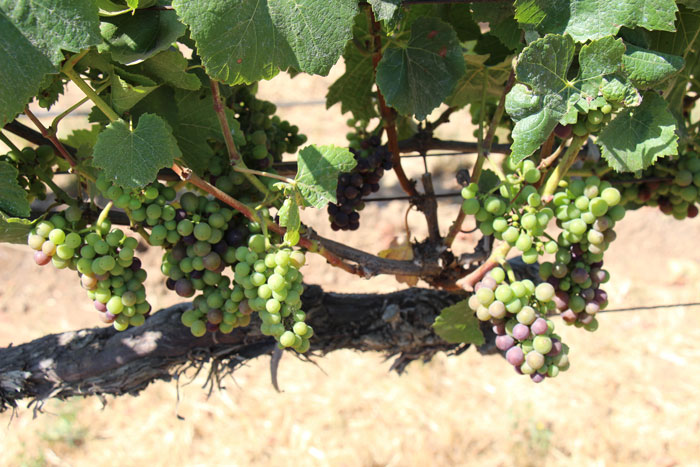
Following an unusual start Santa Cruz vines settle in for a more normal pace of development
“Since we’re not yet at full set, it’s too early to determine cluster counts,” Prudy Foxx says. “But, from what I’m seeing, I get a sense that this year’s crop will be more normal in size.”

The 2015 season has started out as another exciting one for viticulture consultant Prudy Foxx, a PCA who works with growers in the Santa Cruz Mountains AVA.
“We’re looking at a classic year, where you just can’t predict things too early.” she says.
It kicked off with an unusually early and isolated budbreak. Buds on a few vines here and there began to break well before the rest in the blocks, she reports.
In early March, for example, a fast-growing Nebbiolo vine in one vineyard touched the tips of the fingers of a client standing with his arms stretched high. Elsewhere, a Pinot Gris vine displayed set clusters in mid-March, she notes. In January, she even saw fruit forming on an apple tree.
With anywhere from a quarter to an inch of rain falling every several weeks during the last two months, Foxx doubts such growth behavior reflected the effects of the on-going drought.
“A more compelling reason was the warm winter temperatures,” she suspects. “The grapes really didn’t go dormant.”
However, the pace of development has since slowed with the cooler temperatures of late, she notes.
“Now vine development has evened out and now, although the vineyards may be about a week ahead of normal, I’m not as shocked by what I’m seeing as I was earlier this year.”
By May 12, her Burgundy varieties in the Corralitos Districts on the west side of the mountains, Chardonnay and Pinot Noir, ranged from bloom to full set. Meanwhile, on the east side, her Bordeaux varieties, particularly Cabernet Sauvignon, are just starting to bloom.
“Sometimes, with an extended bloom and flowers setting at different times, you get an extended harvest within the same block,” she says. “It’s too early to tell if that will be the case this year.”
Regardless, Foxx isn’t expecting a repeat of the unusually large crops of the past several seasons.
“Since we’re not yet at full set, it’s too early to determine cluster counts,” she says. “But, from what I’m seeing, I get a sense that this year’s crop will be more normal in size.”
Daytime temperatures reaching into the 70s combined with light showers have increased pressure in the vineyards from such fungal diseases as powdery mildew and botrytis. To minimize the frequency of spraying, she’s implementing more intensive canopy management practices and doing them earlier than normal.
“Controlling these diseases isn’t all about spraying all the time,” she says. “It’s also about thinning shoots and removing leaves to let in air and light to dry out the canopies.”
On smaller vineyards, around 5 acres or less in size, she encourages her growers to run their air-blast sprayers without any liquids up and down the rows to blow-dry the vines. Also, she has crews shake the trellis wires as they walk the vineyards to dispel water from the leaves.
“These techniques can be very effective in reducing the disease pressure, especially when the vines are flowering,” Foxx says. “Encouraging the vines to dry out helps to prevent the flowers from rotting off.”
In view of the warm winter, with relatively little rain, she is also preparing for insects to be more of threat to her vineyards than usual this season. In addition to seeing a little more mite activity than normal, she reports much higher ant activity on the vines, indicating the need to look under the bark for signs of mealybugs.
Also, Foxx is using sticky traps to check the vineyards closely for leafhoppers. She’s cautious when spraying any insecticide, whether conventional or organic, to minimize any disruption to the beneficial insects. “I don’t want to spray just because I see a few leafhoppers, since they are food for the beneficials,” she says. “But, we’re definitely seeing an uptick in leafhopper numbers this spring.”
About the Author(s)
You May Also Like



